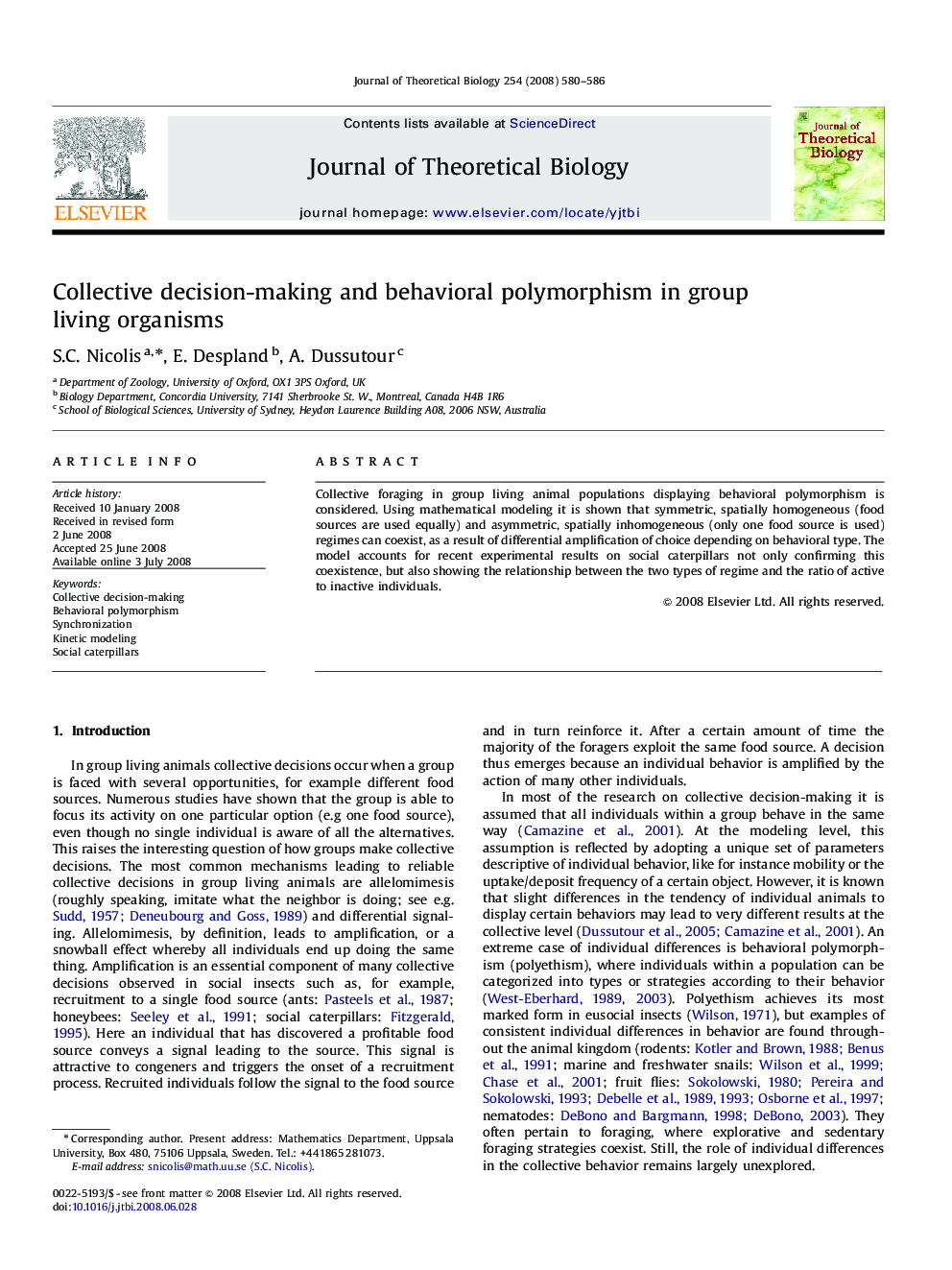| Article ID | Journal | Published Year | Pages | File Type |
|---|---|---|---|---|
| 6371652 | Journal of Theoretical Biology | 2008 | 7 Pages |
Abstract
Collective foraging in group living animal populations displaying behavioral polymorphism is considered. Using mathematical modeling it is shown that symmetric, spatially homogeneous (food sources are used equally) and asymmetric, spatially inhomogeneous (only one food source is used) regimes can coexist, as a result of differential amplification of choice depending on behavioral type. The model accounts for recent experimental results on social caterpillars not only confirming this coexistence, but also showing the relationship between the two types of regime and the ratio of active to inactive individuals.
Related Topics
Life Sciences
Agricultural and Biological Sciences
Agricultural and Biological Sciences (General)
Authors
S.C. Nicolis, E. Despland, A. Dussutour,
